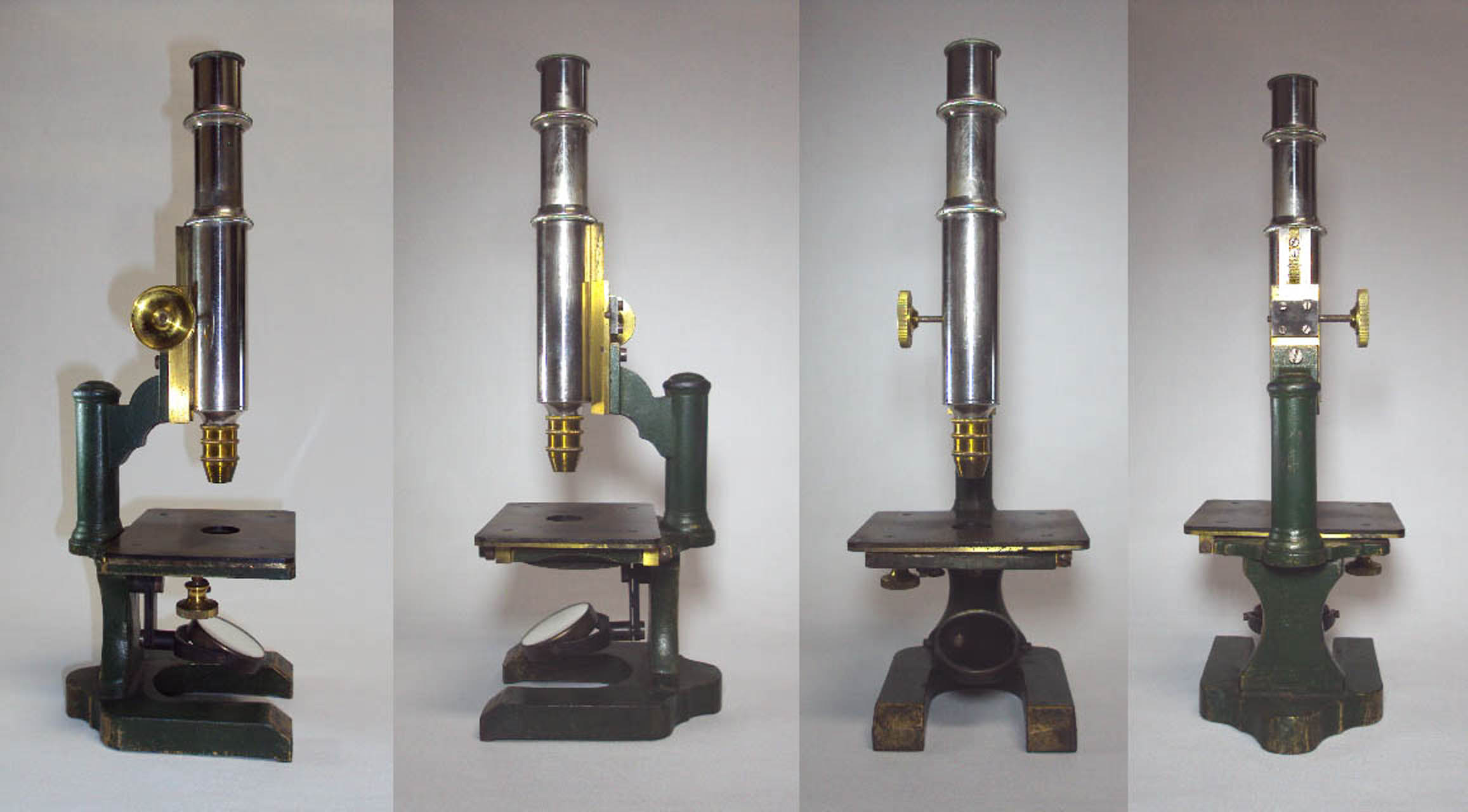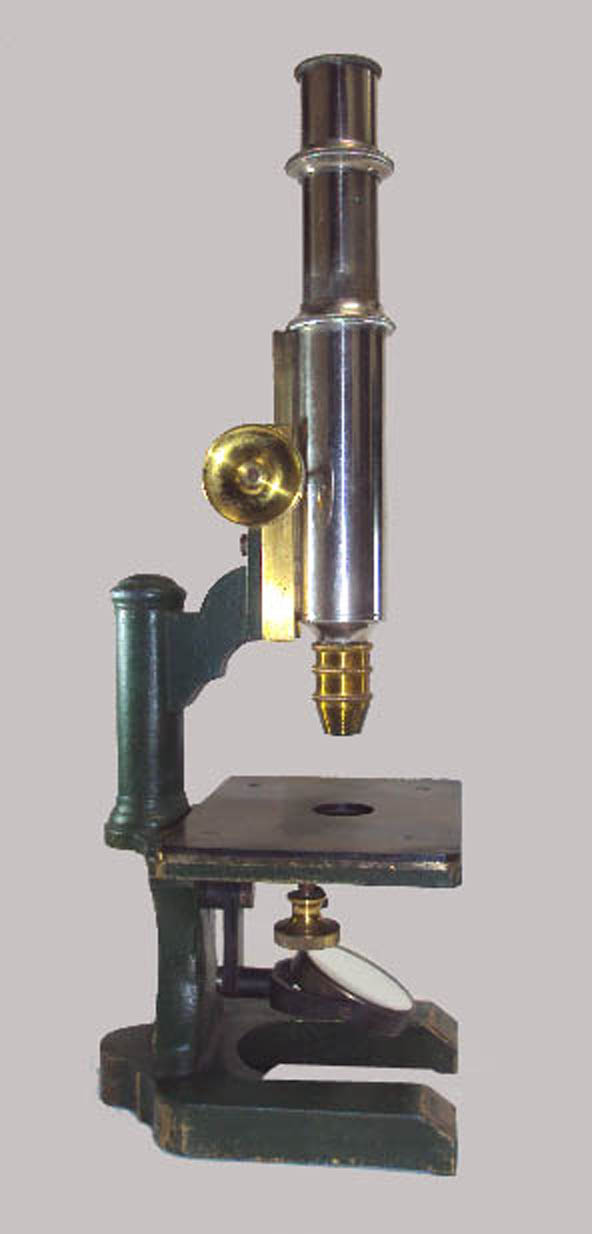HISTORY: F.W. Schiek produced
high quality research microscopes until 1864 when the business was taken over by his son, who often added a c before the K
at the end of the name as is seen in the stamp in the box but curiously not on the magnification table.
Once the younger 'Schieck' took over he changed the focus of
the firm to higher volume and more basic microscopes. Schieck actually sold the same stand pictured here with different
objectives for different purposes. Like several other German makers of the time, he especially sold microscopes for
meat inspection. Meat inspectors were looking for Trichinella spiralis the pork parasite which causes
trichinosis in humans who eat the contaminated meat (particularly when incompletely cooked). Pork was the predominant source of this roundworm but nowadays
in the United States, Bear meat has become the most common source.
Since horses and cows are herbivores, it is only when their meat is contaminated with the infected meat of other animals
that trichinosis can occur. Pork can also be contaminated with the Pork tapeworm, Taenia solium which leads to the
disease cysticercosis, but cysticercosis is a disease of warmer
climates like Latin America and Africa. Both of these diseases are
serious and can be fatal. Following the discovery of the method of transmission of Trichinosis (by Rudolf Virchow, a German scientist of the 19th century),
meat inspection, especially in Germany where undercooked sausage was a common food, became widespread. The highest incidence of
trichinosis is today in Mainland China.
HISTORY OF TRICHINOSIS AND THE TRICHINASCOPE:
The presence of Trichinella spiralis was first discovered by the famous British Pathologist Sir James Paget, when he was a medical student in London.
He was clever enough to look at one of the nodules from the diaphragm under a borrowed microscope. He also shared his information with Richard Owen who independently observed the worms under the microscope and and reported it (without credit to Paget). The importance and pathophysiology of the infection, as well as the life cycle, were not established until Rudolf Virchow of Germany did so in the 1860's. Eventually Virchow convinced the Germans of the need to inspect pork for Trichinella (which they frequently undercooked or did not cook at all) and also reported the importance of carefully cooking pork to kill the organism. This led to an explosion in the need for microscopes to inspect the meat-the Trichinascope.
Nowadays the compressor method is no longer used, the standard type of inspection being based on modified digestion of a specimen of meat and the sediment being examined with a stereomicroscope for the parasite which remains undigested.
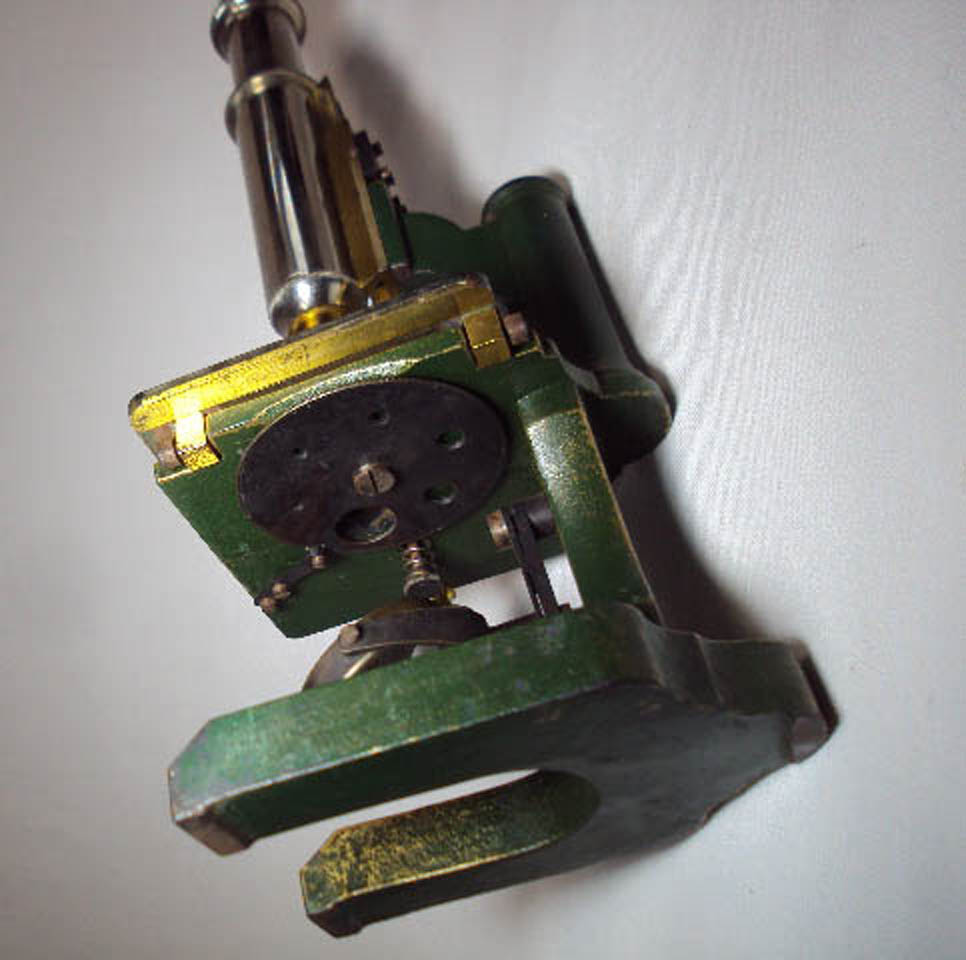
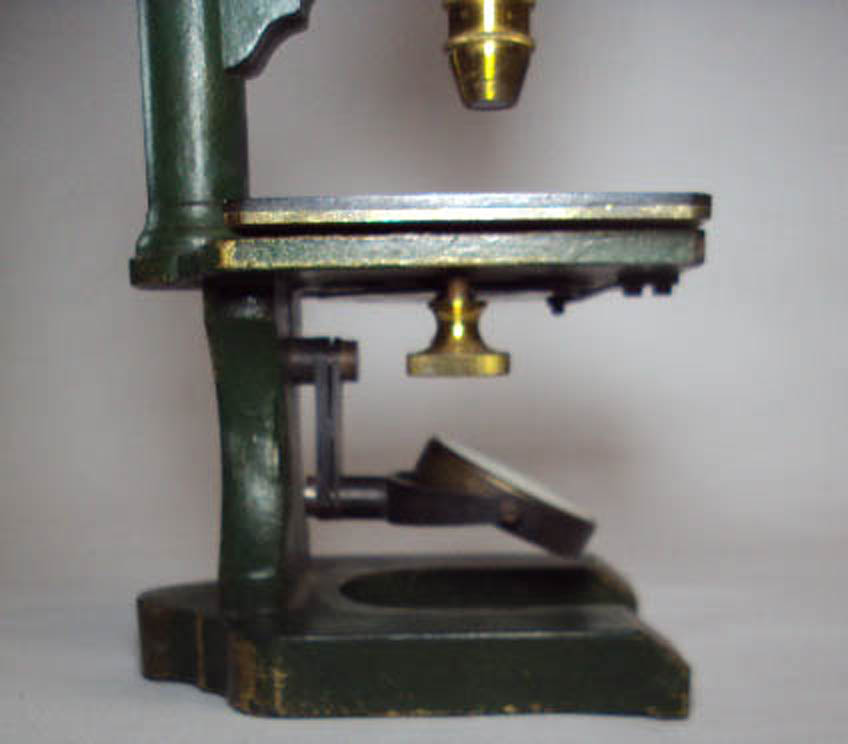
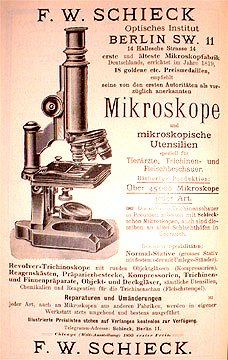
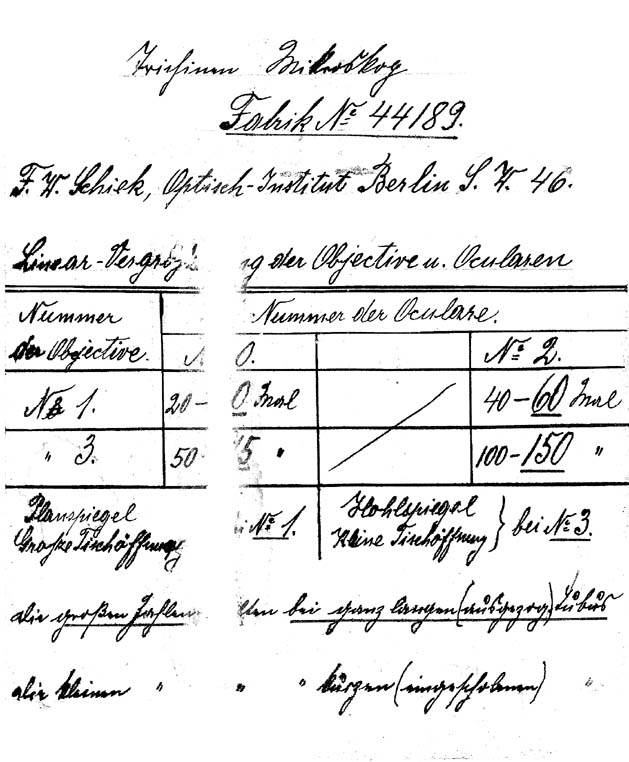
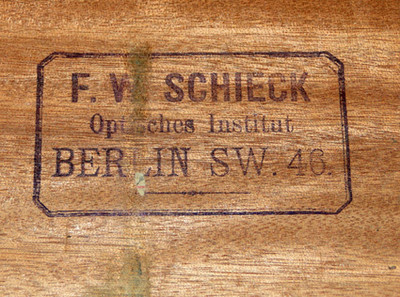 Signed on the inside wooden lid:
Signed on the inside wooden lid: 